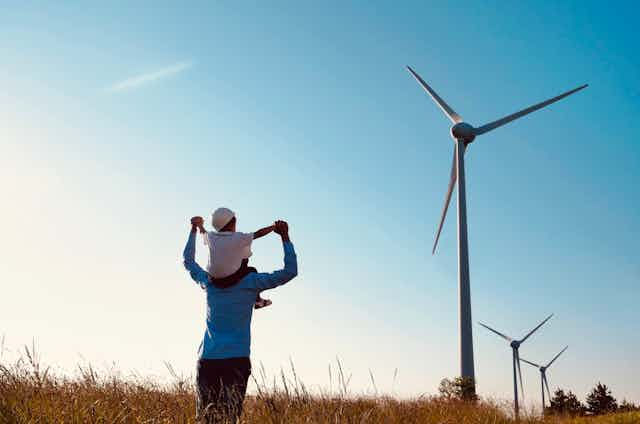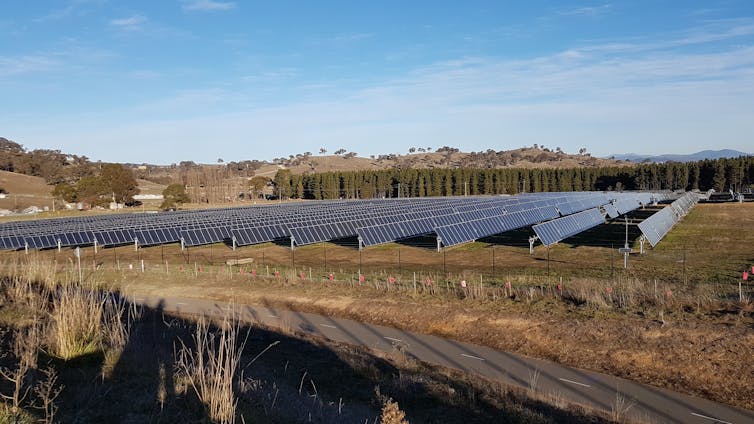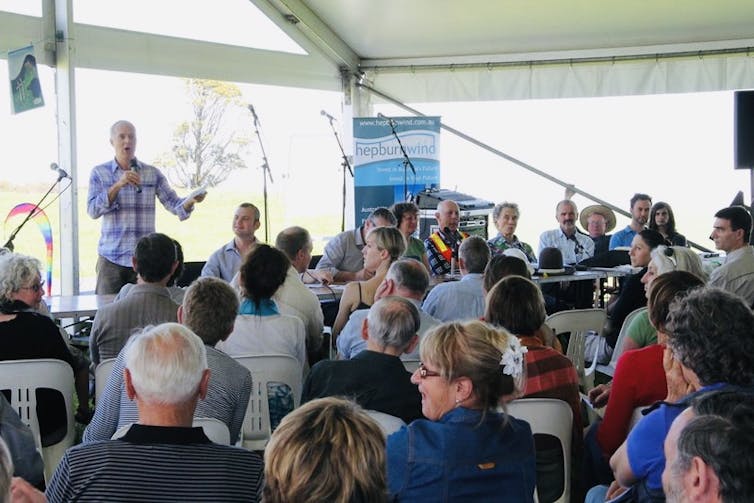

Dominique McCollum Coy is affiliated with Coalition for Community Energy.
Roger Dargaville has received funding from ARENA and the State Government of Victoria, and works with industry on renewable energy related projects.
Shirin Malekpour ne travaille pas, ne conseille pas, ne possède pas de parts, ne reçoit pas de fonds d'une organisation qui pourrait tirer profit de cet article, et n'a déclaré aucune autre affiliation que son organisme de recherche.
Monash University apporte des fonds en tant que membre fondateur de The Conversation AU.
Voir les partenaires de The Conversation France
In the town of Goulburn in southern New South Wales, an energy revolution is brewing. The community has come together to build its own 4,000-panel solar farm – everyday citizens are invited to buy shares in the venture and reap the rewards.
Goulburn is not alone: community-owned energy is an idea whose time has come. About 100 community energy groups operate across Australia – their projects at various levels of development – up from 25 groups in 2015.
The concept is gaining political attention, too. Independent MP for the federal Victorian seat of Indi, Helen Haines, in August moved a motion in parliament, calling on the Morrison government to support community energy, including establishing a new government agency. The bill is backed by fellow independent Zali Steggall.
At its core, community energy rests on the belief that everyday people should have power over how their energy is generated – including its environmental and social impacts. Big corporations should not control our energy systems, nor should they reap all the profits. So let’s take a look at how community energy works.

Australia’s first community-owned renewable energy project, Hepburn Wind, started generating power in June 2011. Since then, many more communities across Australia have banded together to manage their own solar, wind, micro-grid and efficiency projects.
The Goulburn project will be built in the Hume electorate of federal energy minister Angus Taylor, about 3km from the town centre. Earlier this year it received a A$2.1 million state grant, under the Regional Community Energy Fund.
Investors can reportedly buy A$400 shares, each covering the cost of a solar panel and the infrastructure needed for grid connection.
Community energy groups take various forms.
Hepburn Wind and the Goulburn Solar Farm, for example, involve a community investment model in which local groups develop a project, then seek investors from the community to fund it.
This might involve forming a cooperative, or selling shares in the venture. The community organisation may take responsibility for delivering the project – including design, installation, and management – or may outsource this to an external company.
A second model involves raising money through donations, either via crowd-sourcing platforms or traditional means. The money is usually spent on installing a sustainable energy system at a local premises. For example in north-east Victoria, a First Nations-owned renewable energy project will deliver solar power to the office of a state government agency.
The third type of project involves a group of households coming together to find a renewable energy solution, such as bulk-buying solar energy.

Communities must be empowered to take part in planning, and have ownership of projects. Our research, soon to be published, shows such empowerment involves helping communities develop the capacity and power to meet their own energy goals. This means developing new skills, working together and becoming equal decision makers.
Governments are central to this by helping communities deliver projects. The Victorian government’s Community Power Hubs are a good example. At three “hubs” – in Ballarat, Bendigo and the Latrobe Valley – various types of energy projects were implemented. Each sought to build local knowledge of, and participation in, community energy, and ensured the benefits stayed in the region.
Australia’s growing community energy movement shows us what’s possible, but it needs more government support, especially at the federal level. Helen Haines’ proposal is a very good start.
The energy transformation will require massive investment, and most projects will be built in regional communities.
Empowering community energy is the ideal way to provide some of that investment, build stronger rural economies and ensure the benefits of the energy transformation are shared by all.